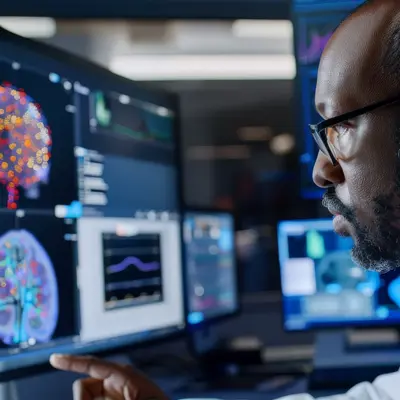The intersection of physics and medical sciences stands as a monumental testament to human ingenuity, inviting deep contemplation into the intricacies of life, health, and disease. Can one truly fathom a world devoid of the contributions of physics to medicine? This beguiling question compels an exploration of the pivotal role physics plays within medical applications, presenting an intellectual challenge that encompasses an expansive range of disciplines, including diagnostic imaging, radiation therapy, and the development of medical devices.
At the heart of modern medicine lies the innovative field of diagnostic imaging. Physics has been instrumental in the evolution of technologies such as X-rays, computed tomography (CT) scans, and magnetic resonance imaging (MRI). These modalities illustrate the profound synergy between physical principles and clinical functionalities. X-rays, for instance, leverage electromagnetic radiation to penetrate bodily tissues, revealing internal structures with remarkable clarity. This non-invasive approach bears witness to the importance of the electromagnetic spectrum in health diagnostics.
Advancing the discourse, one must ponder the intricacies involved in MRI. This imaging technique employs powerful magnetic fields and radiofrequency pulses to elicit detailed images of anatomical and physiological structures. The underlying physics, characterized by nuclear magnetic resonance, transforms patient care, allowing for the visualization of soft tissues without the necessity of ionizing radiation. This aspect particularly emphasizes the ethical considerations of patient safety juxtaposed with the efficacy of medical procedures.
Moreover, the alluring domain of radiation therapy exemplifies the profound impact of physics on cancer treatment. High-energy radiation is meticulously employed to eradicate malignant cells while striving to minimize collateral damage to surrounding healthy tissues. Such an endeavor necessitates a deep understanding of both the physical properties of radiation and the biological responses of living organisms. This is where the principles of dosimetry become paramount, as precise calculations ensure that therapeutic doses are accurately delivered. The interplay of physics in optimizing treatment plans showcases a conscientious balance between treatment efficacy and patient welfare, accentuating the necessity for interprofessional collaboration in the healthcare arena.
In addition to these diagnostic and therapeutic paradigms, physics informs the development of advanced medical devices and techniques. Innovations such as ultrasound imaging and interventional radiology rely heavily on acoustic physics and fluid dynamics. In ultrasound imaging, sound waves traverse through tissues, reflecting back to create real-time images that are indispensable in obstetrics and cardiology. This dynamic interplay of sound and biology elucidates the practicality of acoustic properties, enhancing prenatal monitoring and the assessment of cardiac functions.
As we delve deeper, we encounter the fascinating realm of medical physics, a subfield dedicated to the application of physical principles in medicine. Medical physicists play a critical role in ensuring the safe and effective implementation of radiation therapies, as well as the compliance of imaging equipment with safety standards. Their expertise encompasses not only the physics of radiation but also intricate knowledge of biological interactions, thus forging a quintessential connection between physics and patient care.
Yet, the narrative of physics in medical sciences does not conclude with imaging and therapies. The burgeoning field of biomedical engineering exemplifies how physics catalyzes innovation in prosthetics, implants, and biocompatible materials. The design of a prosthetic limb, for instance, necessitates an understanding of biomechanics, materials science, and fluid dynamics—each derived from foundational physical principles. These advancements enhance mobility and quality of life for individuals with disabilities, underscoring the benevolence of science in addressing societal challenges.
Furthermore, the significance of quantitative methods in medical research cannot be overstated. Statistical physics and modeling techniques are instrumental in analyzing complex biological systems, aiding in drug development, disease modeling, and public health initiatives. The integration of mathematical algorithms and data analysis fosters a more profound understanding of health trends, enabling informed decision-making in clinical practices and policy formation.
Engaging with this dynamic narrative leads to an inevitable inquiry: What does the future hold for the role of physics in medical sciences? With advances such as artificial intelligence and nanotechnology on the horizon, the collaboration between physics and medicine is poised to reach unprecedented heights. The fusing of computational models with biomedical data promises the emergence of tailored therapies, personalized medicine, and more effective diagnostic modalities. Nevertheless, this progression does not come without ethical considerations. The medical community must grapple with questions pertaining to data privacy, equity in healthcare access, and the responsibilities of professionals as they navigate the complexities introduced by technological integrations.
In conclusion, the role of physics in medical sciences is a multifaceted narrative woven through the tapestry of diagnostic imaging, radiation therapy, medical device innovation, and research methodologies. The profound implications of physics resonate through the corridors of hospitals, laboratories, and educational institutions, emphasizing the necessity of a holistic understanding of both disciplines. As we stand on the precipice of future discoveries, it remains imperative to cultivate a culture of interdisciplinary collaboration that harnesses the potential of physics to revolutionize our understanding of health and disease. The profound questions and challenges that lie ahead beckon an odyssey of exploration, innovation, and, ultimately, healing.












